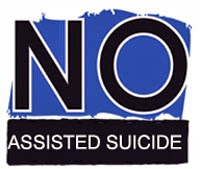
from Jill Stanek.com
by Susie Allen, host of the blog,
Pro-Life in TN, and Kelli
We welcome your suggestions for additions to our Top Blogs (see tab on right side of home page)! Email
Susie@jillstanek.com.
Live Action News dissects Planned Parenthood’s 2012 annual report, which shows that the organization performed 327,166 abortions – allowing them to maintain their “largest abortion chain” status:
For taxpayers who don’t want to fund abortions, this should be especially troubling, considering that Planned Parenthood is raking in a whopping $540.6 million in taxpayer funding, or $1.5 million per day. This accounts for 45% of their revenue. Compare that to their other sources of revenue — private contributions, 26%; non-government revenue, 25%; and “other”, 4% — and it is overwhelmingly clear why the abortion industry fights to keep organizations like Planned Parenthood on the government dole. Without taxpayers to leech off of, Planned Parenthood alone would lose half a billion dollars.
 Euthanasia Prevention Coalition
Euthanasia Prevention Coalition updates us on five states (Connecticut, Montana, New Jersey, New Mexico, and Massachusetts) that are currently debating legalizing assisted suicide:
Americans need to become more aware of the threat that assisted suicide poses. Even though polls indicate that more Americans oppose assisted suicide than support it, very few Americans are aware of the push being mounted by the assisted suicide lobby.
Kansans for Life says “The Internal Revenue Service has proposed new rules for political activity by nonprofits – overturning more than 50 years of settled law – in order to conceal the true political record of pro-abortion politicians.”
Abstinence Clearinghouse links to blogger Matt Walsh’s
response to a young man who was ridiculed by his high school sex ed instructor for believing in abstinence.
Minnesota Citizens Concerned for Life explains the ruling of Doe v. Gomez, decided on December 15, 1995, which obligated Minnesota taxpayers to pay for abortions, “something not required by the U.S. Supreme Court“: The Supreme Court’s Doe v. Gomez decision established a new state constitutional “right” to abortion on demand. This supposed right would remain protected by the state Constitution even if Roe v. Wade, the 1973 decision legalizing abortion in the United States, were to be overturned by the U.S. Supreme Court.Doe v. Gomez allows abortions for reasons such as “stress” or “discomfort.” It forbids the state to “interfere” in any way with a woman’s “decision making” regarding abortion.
Doe v. Gomez also obligates the state — and thus, taxpayers — to pay for abortions…. From June 1994 (under an earlier decision) through 2011, state taxpayers paid more than $19.9 million for 62,252 abortions, according to MDHS. In 2011 alone (the most recent statistics available), state taxpayers paid $1.2 million for 3,693 abortions (MDHS). The state does not report how many women have been hurt or killed from these abortions.
 Down on the Pharm
Down on the Pharm updates readers on a
previous blog about Joshua Ackley (pictured right, foreground), a publicist representing Girl Scouts of America by day and Homopunk band member by night. Since this news about Ackley’s lifestyle has been exposed, he has been moved to a less visible position within the GSUSA organization. Apparently, “[the] worry among the scout moms was that, with this stuff on his mind, he’s not the person to be interacting with the girls, or representing the scouting organization.”
Judie Brown of
American Life League explains the difference between ethics and morality:
We see that ethics today are not always grounded in sound, moral reason and common sense. In fact, as one expert defines it, today we actually have two sets of medical ethics—and the worst of it is that the wrong-headed set is prevailing. On the one side we have secular bioethics. On the other we have the moral law.
The problem with secular bioethics is, of course, that the natural law is tossed out the window in favor of what one or two so-called experts believe to be the best idea at any given time for deciding what is acceptable and what is not. This is where professionals like [the pro-infanticide] Dr. Minerva found their calling.
But on the other side of the aisle we find the professionals, including physicians, educators, lawmakers, and common ordinary folks like you and me who understand that making rational decisions or providing intelligent solutions to complex questions requires a grounding in the moral law.











